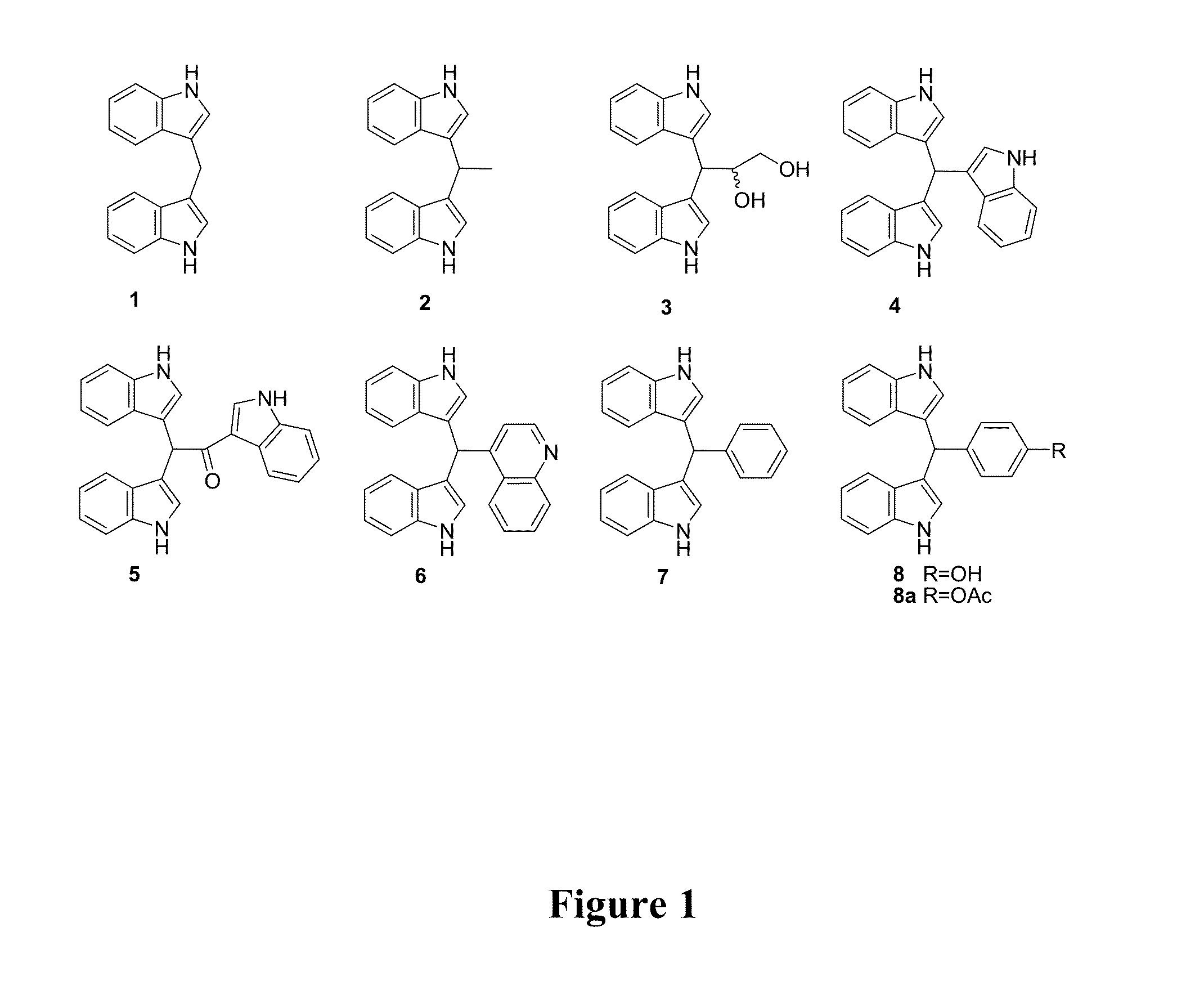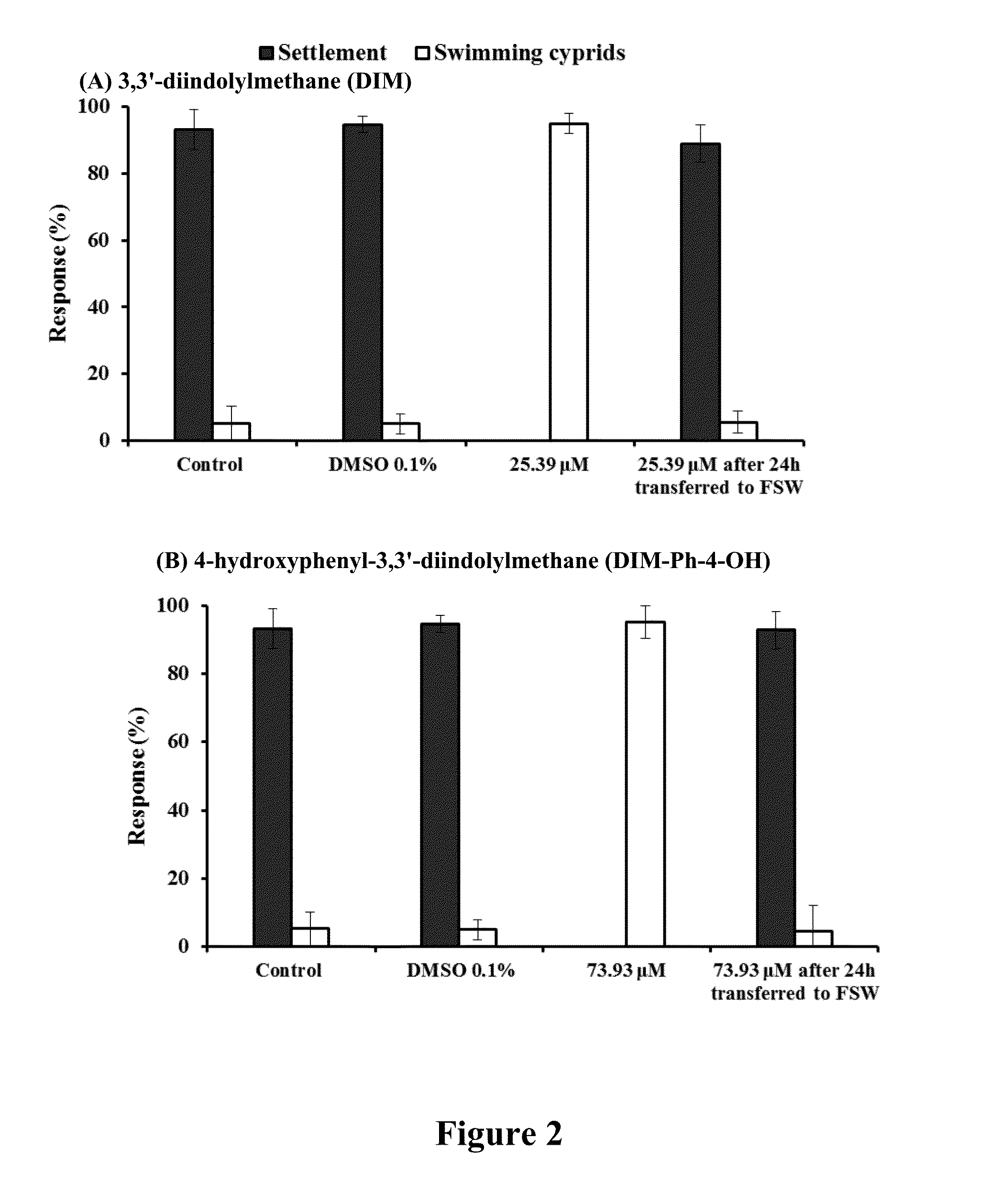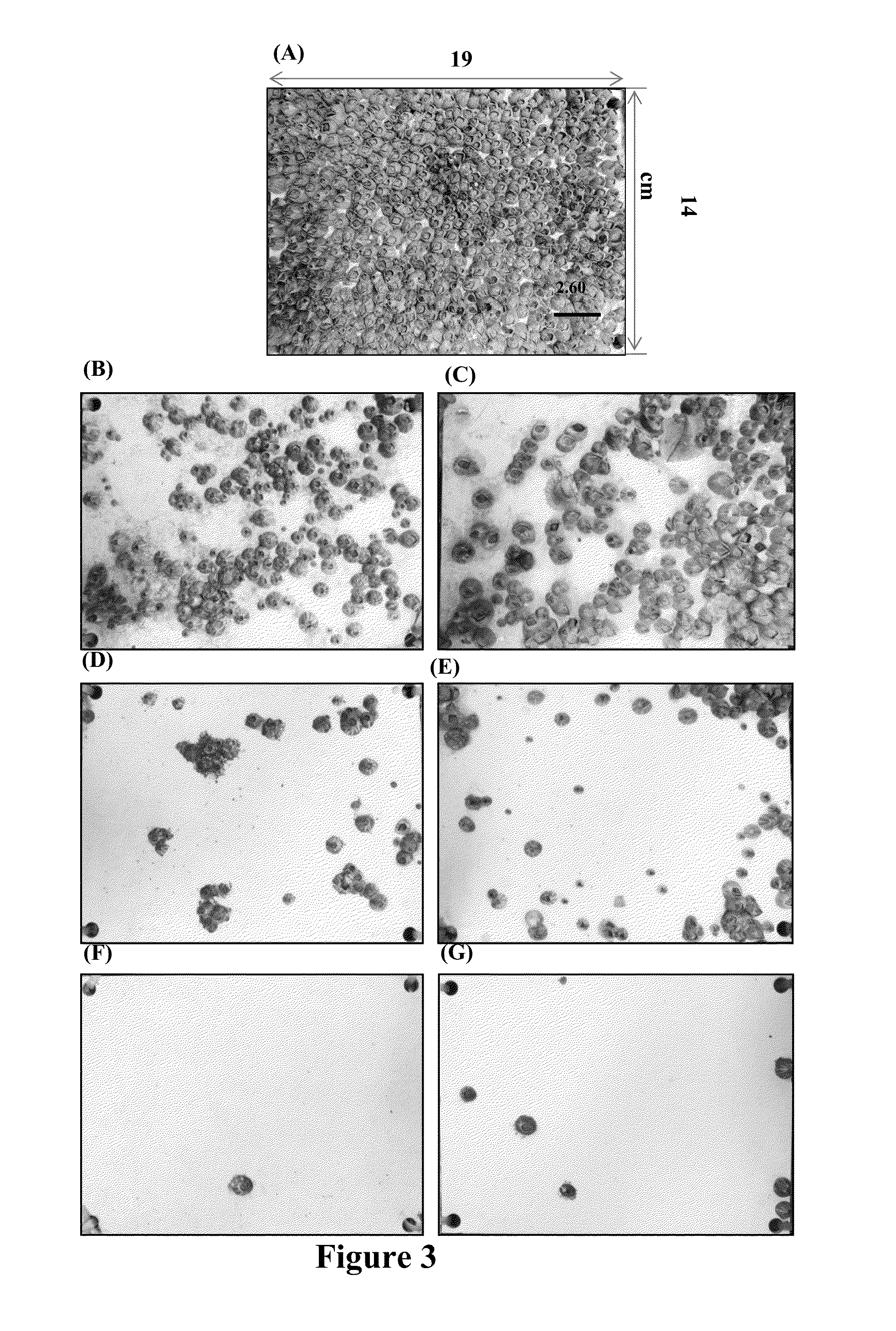Diindol-3-ylmethanes as potent non-toxic antifouling compounds
a non-toxic, non-toxic technology, applied in the direction of biocides, biocide, heterocyclic compound active ingredients, etc., can solve the problems of massive technical and economic challenges, reduced maneuverability, and bio-corrosion of commercially important marine structures, so as to prevent or reduce settlement and/or fouling
- Summary
- Abstract
- Description
- Claims
- Application Information
AI Technical Summary
Benefits of technology
Problems solved by technology
Method used
Image
Examples
example 1
Chemical Structures and Antifouling Activities of Compounds from Pseudovibrio denitrificans UST4-50
[0050]In this study, 50 L of P. denitrificans UST4-50 culture broth were exhaustively extracted by ethyl acetate (EtOAc), which yielded 10.5 g of crude extract. The major and moderate polar components of the extract were tentatively identified as indole alkaloids, based on their characteristic UV-absorbing spectra and color reaction with Ehrlich's reagent for indoles (Veluri et al., 2003). The bioassay-guided fractionation and further purification of the crude extract led to the discovery of eight known indole alkaloids (FIG. 1). In comparison with related physicochemical characteristics and NMR spectral data of chemical standard DIM (commercial DIM was purchased from Sigma Chemical, the detailed information of commercial source has been included in supplementary information) and authentic compounds previously reported in literatures (Bell at al. 1994; Veluri et al. 2003; Roy et al. 20...
example 2
Structure-Activity Relationships of DIMs
[0055]As Table 1 shows, all DIMs with the bisindole skeleton exhibited strong inhibitive effects on larval settlement. We were curious about the antifouling activity of structures with single indole skeleton, particularly since Kawamata et al. (2006) reported that some of halogenated gramines with single indole skeleton exhibited good antifouling activities. Therefore, we tested the settlement-inhibitory activity of the indole alone and found that indole showed only weak antifouling activity but had a relatively high toxicity (EC50=17.50 μM, LC50 / EC50=4.72, see Table 1). Furthermore, 1,1,1-tris(3-indolyl)methane (4) with three indole rings showed higher antifouling activity than indole but lower activity than DIM. The common moiety, di(1H-indol-3-yl) methylene, of DIMs may serve as an important functional group of DIMs for their antifouling activity and that their antifouling mechanism might be different from that of indole. In addition, compo...
example 3
Field Tests of DIM
[0057]Extending laboratory bioassays of antifouling compounds to field testing is a critical step in the development of natural product-based antifoulants. In the present study, DIM (1) was incorporated into basal paints for field testing, and the commercial antifouling biocide Sea-Nine 211™ was chosen as a reference to assess the relevant antifouling performance of DIM (1). FIG. 4 shows the different extents of biofouling on tested panels submerged in seawater in the field for 5 months. The effect of DIM (1) in preventing larval settlement of fouling organisms was in a concentration-dependent manner in field condition, which was well documented in laboratory bioassay. As shown in FIGS. 3 and 4, the surface of the negative control panels (without any biocides) was almost 100% covered by barnacle adults. In a striking contrast, there were few marine organisms observed on the surface of 10% and 15% treated PVC panels (see FIGS. 3 and 4). At these two concentrations, ...
PUM
 Login to View More
Login to View More Abstract
Description
Claims
Application Information
 Login to View More
Login to View More - R&D
- Intellectual Property
- Life Sciences
- Materials
- Tech Scout
- Unparalleled Data Quality
- Higher Quality Content
- 60% Fewer Hallucinations
Browse by: Latest US Patents, China's latest patents, Technical Efficacy Thesaurus, Application Domain, Technology Topic, Popular Technical Reports.
© 2025 PatSnap. All rights reserved.Legal|Privacy policy|Modern Slavery Act Transparency Statement|Sitemap|About US| Contact US: help@patsnap.com



